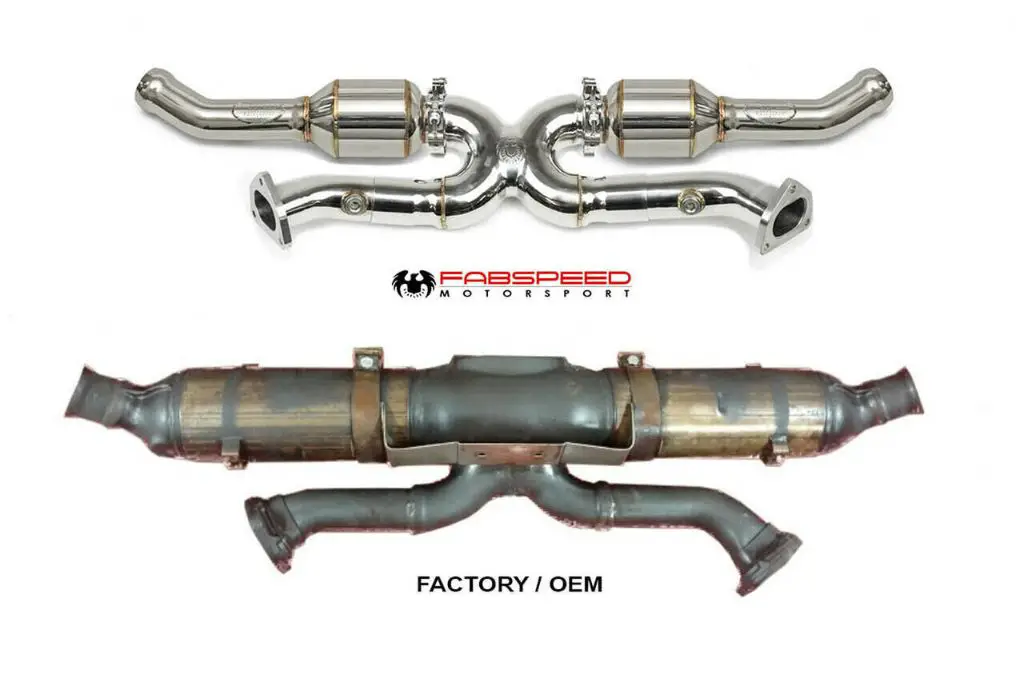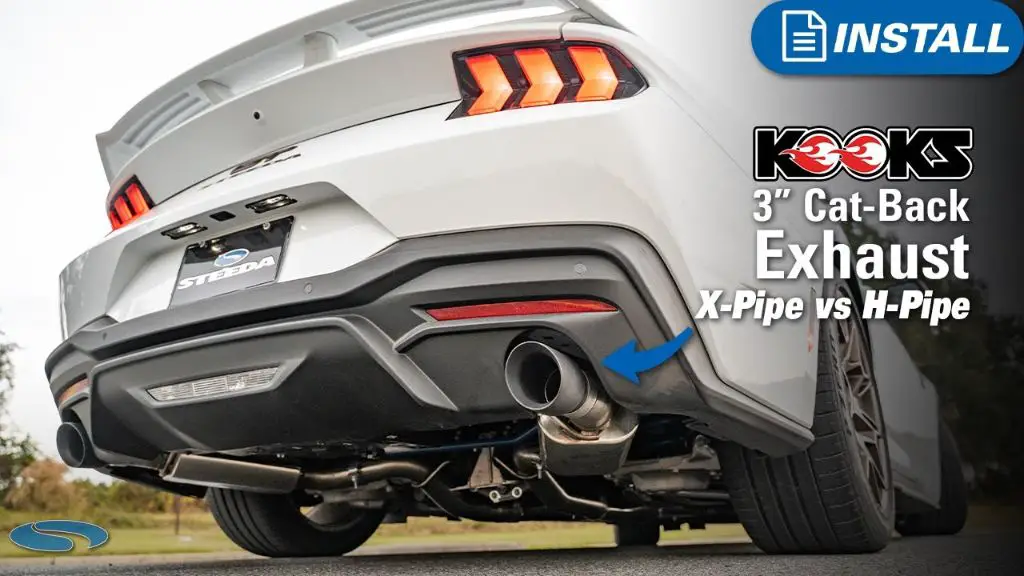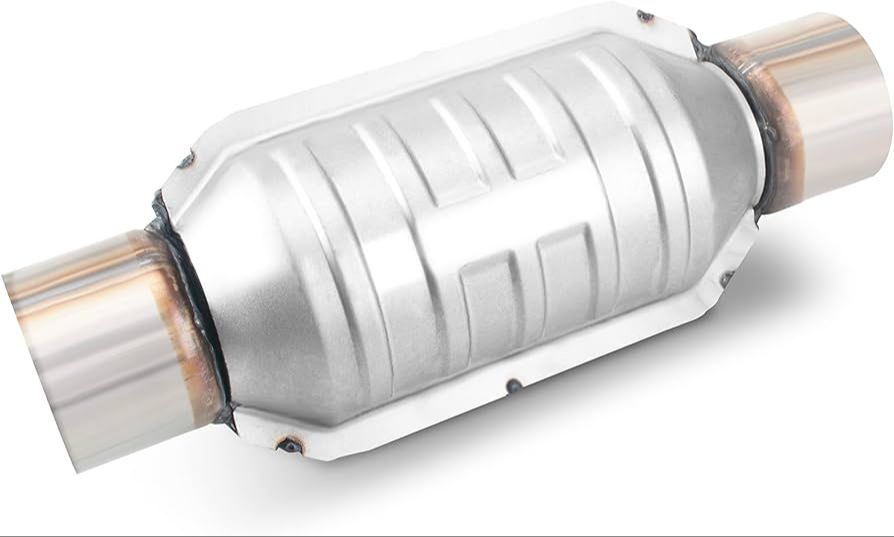What is an X Pipe?
An X-pipe exhaust system is a type of aftermarket performance exhaust system that replaces the stock exhaust system on many vehicles. It gets its name from the cross-shaped section in the middle of the exhaust system that connects the two banks of cylinders (for engines with two cylinder banks, like V6, V8, etc.). This cross-shaped “X” section helps to balance the backpressure and smooth the exhaust pulse from each bank.
According to Autos.com, the X-pipe exhaust system replaces the stock exhaust manifold, catalytic converter, resonator and muffler. It features larger diameter piping and low restriction performance mufflers to help optimize exhaust flow and reduce backpressure. The “X” crossover section provides performance benefits by joining the exhaust pulses and improving scavenging compared to a traditional dual exhaust set-up.
How X Pipes Work

X pipes are essentially two pipes that intersect to form an X shape. This design evens out the pulses of exhaust gases from the engine cylinders, which helps improve scavenging and reduces backpressure. According to Motortrend, the X shape allows the high-pressure pulses from each bank of cylinders to collide and cancel each other out, creating more steady exhaust flow. The cross-over design helps balance the pressure and results in a smoother exhaust pulse.
By evening out the exhaust pulses, an X pipe allows the engine to breathe and exhaust gases to escape more efficiently. This reduces backpressure and helps increase low-end torque and horsepower. X pipes are essentially tuning pipes that make the engine’s exhaust pulses work together in harmony rather than fight against each other. Overall, X pipes optimize exhaust scavenging which improves engine efficiency and performance.
X Pipes and Sound
An X pipe has a significant impact on the sound produced by the exhaust system. The main purpose of the X pipe is to balance the pulses of exhaust gases between the engine’s cylinders and banks. This helps reduce unwanted noise like misfiring, backfiring, and engine vibration sounds.
The X pipe design connects the two banks of cylinders (for V-configured engines like V6s and V8s), joining the exhaust pulses and helping to balance backpressure. This creates a change in the tone and pitch of the exhaust note, making it sound deeper and smoother.
According to one Corvette forum user, the X pipe “stops the motor boat sound and the popping on decel. It just smooths out the sound.” (Source)
In general, the X pipe creates destructive interference between sound waves, which reduces certain unwanted frequencies. This makes the engine tone louder overall. It eliminates the uneven exhaust pulses and backpressure caused by cylinder firing order. The result is an exhaust note that is bold, smooth, and aggressive.
Installing an X Pipe
Installing an X pipe is a relatively straightforward process that can typically be completed in 1-2 hours by a moderately experienced DIY mechanic. The basic steps involve:

- Raising the vehicle and supporting it securely on jack stands.
- Removing the stock exhaust system from the catalytic converters back.
- Bolting the new X pipe in place using gaskets and hardware supplied with the kit.
- Reconnecting the tailpipes to the X pipe outlets.
- Lowering the vehicle back down.
Some key tools and materials needed include:
- Jack and jack stands
- Basic hand tools – wrenches, sockets, screwdrivers, etc.
- WD40 or other penetrating lubricant
- Gaskets or sealant
- X pipe kit with all hardware and instructions
It’s a good idea to have a helper available as the X pipe itself can be bulky and awkward for one person to maneuver into place. Always follow the vehicle manufacturer’s procedures for safely raising and supporting the vehicle. Refer to instructions provided with the X pipe kit for torque specs and any specific installation notes. Allow time for the system to fully cool before lowering the vehicle and starting the engine.
For a full step-by-step guide, refer to the installation instructions provided by 034Motorsport: https://www.034motorsport.com/docs/034-105-7040-Install-Instructions.pdf
X Pipes and Cats
X pipes and catalytic converters have an interesting relationship. Catalytic converters are emissions control devices installed on most modern vehicles. They convert harmful exhaust gases like carbon monoxide into less harmful emissions.
Most X pipes are designed to connect to headers and allow exhaust gases to flow more freely to the mufflers and tailpipes. This increased airflow requires removing the catalytic converters in between the headers and X pipe [1]. The cats restrict exhaust flow, so eliminating them allows the X pipe to work more efficiently.

Therefore, installing an X pipe usually involves cutting out the catalytic converters and replacing them with a section of straight pipe. The X pipe connects to this straight section, bypassing the cats altogether. This allows maximum exhaust flow but removes the emissions reduction function of the cats.
Why Remove Cats?
There are a few key reasons why car enthusiasts may want to remove the catalytic converter from their vehicle:
Performance Gain – Removing the catalytic converter eliminates a major restriction in the exhaust system, allowing the engine to breathe and flow exhaust gases more freely. This can result in increased horsepower and torque output. According to sources, removing the cat can provide anywhere from 5-15% more power depending on the vehicle. Removing the catalytic converter from your car: a good idea
Enhanced Engine Sound – The catalytic converter also muffles and reduces exhaust noise. Removing it creates a louder, more aggressive exhaust tone that many gearheads find desirable. The engine will sound closer to its true character.
Improved Fuel Economy – Eliminating the restrictive catalytic converter reduces backpressure in the exhaust, which can allow for more efficient engine operation and gas mileage savings. Estimates range from 2-10% improvement.
For those seeking maximum performance from their engine, removing the catalytic converter is an appealing modification. However, it does come with drawbacks and legal considerations discussed in the next sections.
Downsides of Removing Cats
Removing the catalytic converter can lead to some significant downsides that should be carefully considered before making any modifications. The most notable issues are increased emissions and potential legal problems.
Catalytic converters play an important role in reducing harmful emissions from your vehicle’s exhaust. Without a properly functioning cat, your car will emit higher levels of hydrocarbons, nitrogen oxides and carbon monoxide. These increased emissions can contribute to air pollution and have negative impacts on the environment and human health.
In many jurisdictions, including the United States, it is illegal to modify or remove emissions control equipment like catalytic converters. Doing so violates Clean Air Act standards and can lead to hefty fines if caught. For example, federal law imposes fines of up to $25,000 per violation on tampering with emissions systems [1].
You may also run into problems passing vehicle inspections without a proper cat in place. Most areas require testing tailpipe emissions during inspections, which your vehicle may fail without a functioning catalytic converter.
Additionally, the engine control module uses sensors before and after the catalytic converter to monitor conversion efficiency. Removing the cat can cause the check engine light to turn on due to diagnostic trouble codes being triggered.
Alternatives to Removing Cats
Instead of fully removing catalytic converters, which is illegal in many places, there are a couple legal alternatives that can increase exhaust flow and sound while still reducing emissions.
One option is to install high flow catalytic converters. As the name suggests, these converters have higher flow rates to allow more exhaust gases to pass through. According to this source, high flow cats can increase power and produce a deeper, louder sound compared to stock converters. However, they still filter out pollution to comply with emissions regulations.

Another alternative is using exhaust cutouts. These are valves installed behind the catalytic converter that can open up to bypass the muffler and resonator. When closed, the exhaust continues through the normal system. Exhaust cutouts allow drivers to get a louder, more aggressive exhaust note when desired without removing pollution control devices.
While not as drastic of a change as removing cats completely, these two alternatives provide moderate sound and performance improvements while staying street legal.
Reader Questions
Looking to install an X pipe exhaust on your vehicle? Common questions readers have asked include:
Do X pipes increase horsepower?
X pipes can provide a slight increase in horsepower by improving scavenging and allowing the engine to breathe better. By equalizing the pressure between banks of cylinders, an X pipe helps reduce reversion which improves cylinder filling. The design is optimized for torque rather than peak horsepower. Expect to see small HP gains in the mid-range, though the increase may not be noticeable without dyno testing.
Will an X pipe work with my car?
X pipes are compatible with V6, V8, V10, and V12 engines where there is a split dual exhaust system. They are commonly used on muscle cars, trucks, and performance vehicles. Measure the diameter of your existing exhaust pipes to select the right size X pipe. Keep in mind X pipes connect two banks of cylinders, so they will not work on inline or single exhaust systems.
What does an X pipe sound like?
X pipes create a deeper, more refined exhaust tone compared to straight pipes. By joining two exhaust streams, the X pipe balances the pulses and creates a mellower note. The “X” design helps reduce drone while still allowing a muscular rumble at higher RPMs. Overall, X pipes produce a cleaner yet still aggressive sound quality.
Conclusion
An X-pipe is an exhaust modification that changes the flow dynamics of exhaust gases for performance gains. While they can alter the sound of an engine, X-pipes themselves do not remove catalytic converters (“cats”). Cats filter harmful emissions to meet environmental regulations. Removing them may provide modest power gains but will fail emissions testing. There are legal ways to improve performance without removing cats. Consider high-flow cats, headers, intakes, tuners, or other bolt-ons first.
In summary, X-pipes alone do not remove or replace catalytic converters. While removing cats is sometimes done for performance, it comes with legal risks and environmental impact. Weigh these cons against modest potential power gains. There are safer ways to improve performance that don’t sacrifice air quality and avoid fines.
Consider your goals, research your options thoroughly, and make informed mods. Put safety and legality first. An X-pipe can be one part of a well-planned build when installed properly according to your local laws.
